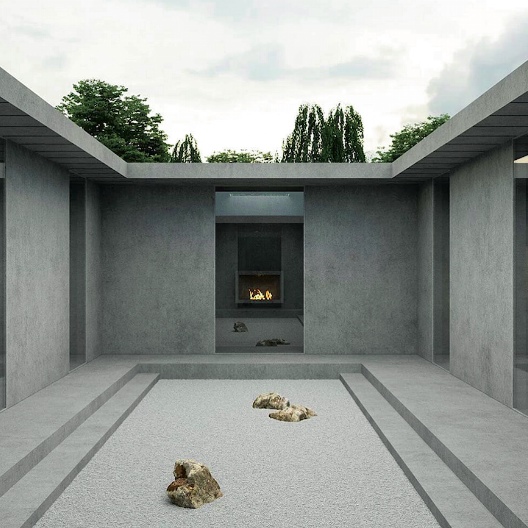Kanye West, rap’s most enigmatic star, has dreams of making affordable, brutalist homes

The students were a combination of shocked and awed when their lecturer jumped on top of a desk and cried, “The world can be saved through design!”
It could have been a scene from 1989’s Dead Poets Society, but in fact it was an overexcited Kanye West taking a class at Harvard Graduate School of Design back in 2013. What can West – probably the most famous rapper in the world but, as far as we know, not a qualified architect – teach Harvard graduates about design?
We’re about to find out. West recently announced he’s expanding his Yeezy fashion label to include a division called Yeezy Home. Though there are armies of hip hop entrepreneurs, he is the first one to branch out into architecture.
But West has always been desperate to be taken seriously as a multi-disciplinary artist. Twenty-one Grammys and 21m album sales later, he’s got nothing to prove as a musician, but he’s been trying to conquer the world of design for over 10 years. West has been threatening to unleash a clothing line since 2006, but it didn’t hit the Paris runway until 2013, where it got mixed reviews.
He once told Vanity Fair he was “a minimalist in a rapper’s body”
More successful was West’s collaborations with Nike and Adidas. The latter partnership recently yielded his sixth collection of trainers, which continue to sell out in record time, but Yeezy himself is still creatively frustrated. In an interview with BBC Radio 1’s DJ Zane Lowe around Yeezus’ release in 2013, West said, “I want to do product, I am a product person. Not just clothing but water bottle design, architecture… I make music, but I shouldn’t be limited to one place of creativity.”
West’s love affair with architecture was first revealed when pictures of his enigmatic Manhattan apartment, designed by minimalist architect Claudio Silvestrin, came to light. Using natural materials such as limestone and pear wood, there are no wall divisions, just a free-flowing space with a rigorous geometry, interrupted by the odd stone island. It’s beyond serene, almost monastic in its stark simplicity.
West has also shared images on social media of his home in the Hidden Hills, an exclusive gated enclave of Los Angeles. Designed by Belgian Axel Vervoordt, it is also strikingly mausoleum-like, with metre-upon-metre of polished concrete.
He became obsessed with a furniture exhibit at Le Louvre in Paris during the making of Yeezus, calling a lamp by Le Corbusier his “greatest inspiration”
But is this a fair assessment of what’s to come from Yeezy Home? West seems to suggest it is. He once told Vanity Fair he was “a minimalist in a rapper’s body”. He became obsessed with a furniture exhibit at Le Louvre in Paris during the making of Yeezus, calling a lamp by Le Corbusier his “greatest inspiration”.
The godfather of Brutalism during the 1960s, the Swiss-French architect moulded modern architecture to improve the lives of the impoverished in urban cities. Also a big fan of concrete, Corbusier’s work is said to be the inspiration behind the Barbican Estate and the cultural renaissance on the South Bank.
West took this highly-functional, pared down approach to form to his set designers, notably radical Romanian architect Oana Stanescu who created the “travelling mountain and LED sun” for his Yeezus tour. Before even the Yeezy clothing line, he was creating elaborate, technology-driven sets with legendary set designer Es Devlin, including a pyramid-shaped cinema with architects OMA in which he screened his first short film at Cannes in 2012. He also set up design company DONDA, with the intention of assembling a team of architects to collaborate with.
In an echo of Corbusian ideals, it’s rumoured that Yeezy Home’s first foray into the architectural world is an affordable housing development. Renderings appeared on the Instagram account of fashion designer Jalil Peraza, who had previously been part of DONDA and credited West as a designer on the project, describing it as “a low income housing scheme, made of prefabricated concrete”.
Two shots reveal a bare courtyard with a fireplace in the centre, and a stripped back kitchen with large, black window frames, while Peraza’s company Face Modules specialises in providing prefab spaces that can be built quickly and cheaply.
“I hang around architects mostly,” West told Lowe in the same BBC interview. “People that wanna make things as dope as possible.” I’m sure they’d be pretty pleased with that definition.